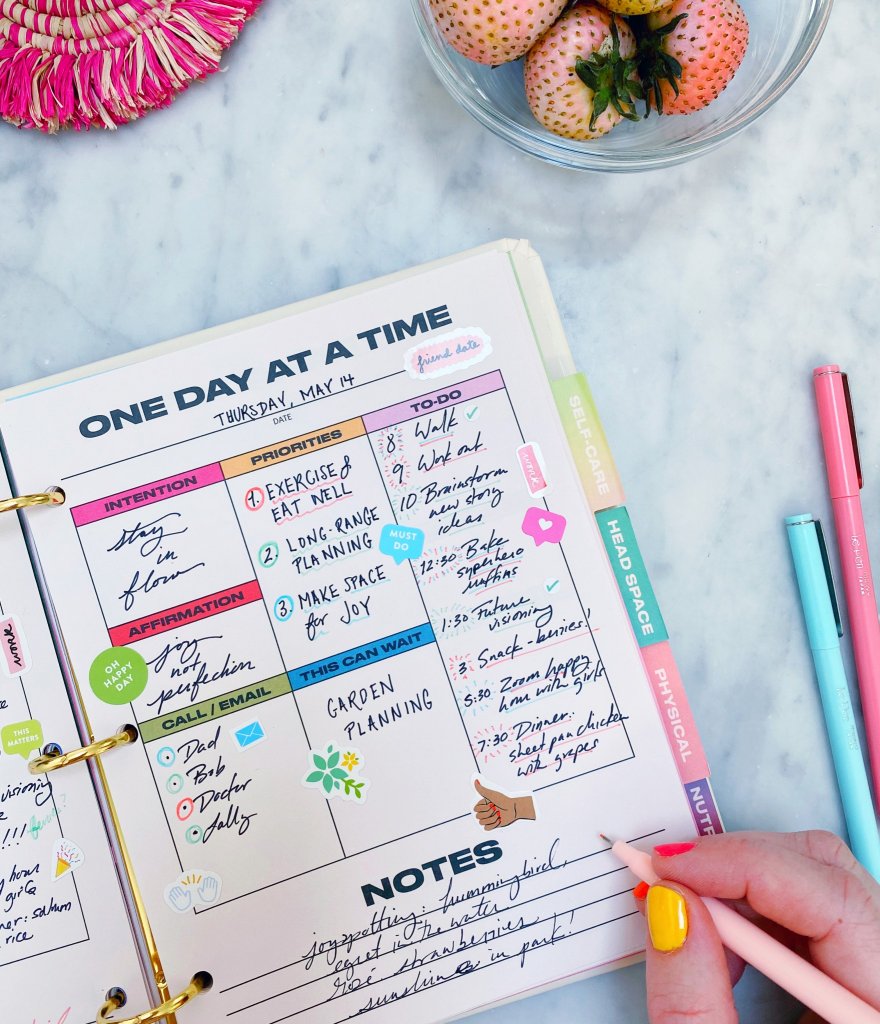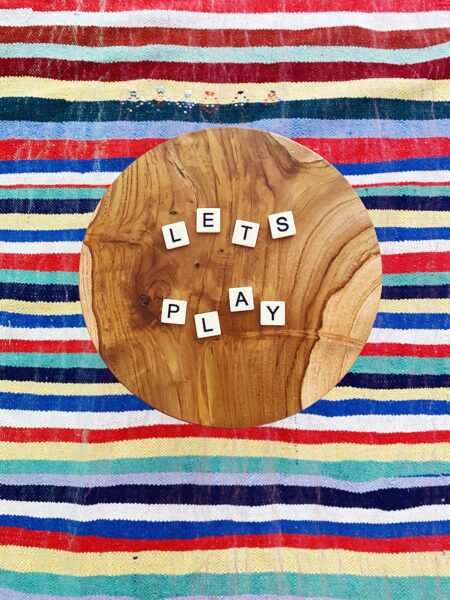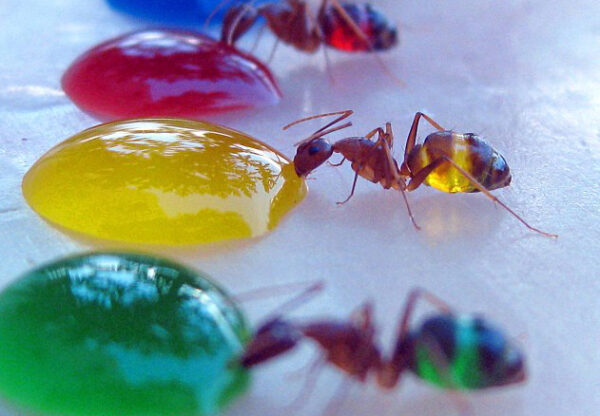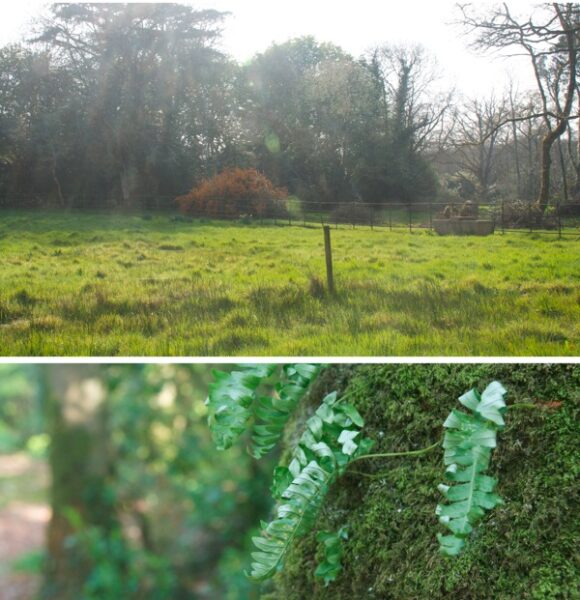Finding joy while flying solo (in quarantine)

One question that’s come into my inbox quite a bit lately is this: How can I find more joy right now while living alone?
While there’s a lot of focus right now on the complex challenges for families and couples in quarantine, from juggling multiple remote work and homeschool schedules to the increased burden of household chores, less attention has been paid to the needs of those who are sheltered in place by themselves. This is striking to me, given that as of 2018 there were 35.7 million single-person households in the US, or 28 percent of all households.
Shelter-in-place orders have a disproportionate impact on those living alone. Whether single by choice or by circumstance, those quarantining alone face different challenges than those who are on lockdown with family or roommates. Less bickering and boundary issues, but a greater risk of isolation and loneliness. While couples and families may miss the pleasure of dinner parties and playdates, for people living on their own, the regular rhythms of brunches, drinks, and informal get-togethers with friends that have been disrupted by the coronavirus are an essential source of well-being.
We tend to think of loneliness as a question of happiness, but it’s also a public health issue. Researchers have correlated loneliness with as much as a 30 percent increase in risk of stroke or heart disease, increased inflammation, and greater risk of dementia for older adults. According to a meta-analysis of studies on social isolation, loneliness can be as detrimental to one’s health as smoking 15 cigarettes a day.
Of course, comfort with being alone runs along a spectrum, and not everyone sheltered in place alone feels lonely. At the same time, people who are flying solo might need different ideas for how to find joy than board games and baking (how many cookies can one person eat, after all?). So in this post, I share a few thoughts for how to create a more joyful life while quarantining on your own.
Before I dive in, I do want to note: if you find that feelings of loneliness are tipping into serious depression or anxiety, or you’re having suicidal thoughts, please seek help. In the US, you can call 1-800-273-TALK (8255).
As I was preparing this post, I dug back into my experience of my own years living alone. I spent six years from my late 20s to my early 30s living by myself in a Brooklyn apartment. And while I wasn’t on lockdown, I did often struggle with feelings of social isolation during that time. I had just returned from two years living overseas, and had just ended a two and a half year relationship. My life was painfully out of sync with those of most of my friends, who were coupled and starting to have kids. Many were also just reaching the point in their careers when they were able to spend real money on dinners out and luxe vacations. Meanwhile, I had just gone back to grad school and had to adhere to a strict budget. While my friends all fled the city on summer weekends for the beach, I spent weekends in my poorly air-conditioned apartment, feeling the hours crawl by. I remember Mondays in class where I was surprised by the sound of my own voice — I hadn’t talked to anyone since the previous week.
One thing that helped me get through that period was to acknowledge that it was temporary. While I definitely had days where I managed to convince myself that I’d be single forever, in clearer-headed moments I was able to see that I likely would eventually meet someone and my days of solo living would end. I tried to picture a time in the future when I might long for the space and freedom that I currently had. Given that, I asked myself: How can I use this time so that I’ll feel it was well-spent?
Similarly, whether you love living alone or are doing it because you haven’t yet found the right match, know that shelter-in-place won’t last forever. This period of time is strange and stressful, but it’s not permanent. So how can you spend it so that you’ll look back and feel satisfied with how you used the time? Here are a few ideas.
Keep your calendar full (and make it joyful)
Many people I know are struggling with the blankness of calendar pages due to canceled social events during quarantine. (This can affect everyone, not just those who are living alone, though it may feel more pronounced for singles.) Blank spaces suggest emptiness, which is visual echo of the disconnection that can result.
The solution? Keep your calendar full! On my calendar, I schedule workouts, walks, and time to plan the nursery each day. I also include reminders of food deliveries, and I put what’s planned for dinner on the calendar so I have something to look forward to that evening. When one member of the Joyspotters Society mentioned she was struggling with the sadness of an empty calendar, members were full of great suggestions, from making notes of small things to do or intentions for each each day, such as send a letter, water the plants, or donating extra food to a food pantry. Plan video dates with friends or family members in advance so you can mark them on your calendar. Others suggested adding a quote of the day, noting down small joys you’ve discovered that day, or making notes on books you’re reading.
What really makes this strategy joyful, though, is to keep it colorful. I use Google Calendar, and have different colored calendars for work time, meetings, personal care, social engagements, birthdays, and financial obligations. The results is that when I look at a week, it looks like confetti sprinkled across the week. In the Joyspotters Society, members talked about using colored pens, stickers, and washi tape to make their calendars a joyful experience. Though it seems like there’s little to plan at the moment, in fact, now might be the perfect time to invest in a new planner that makes you feel excited and inspired.
Do something you’ve always wanted to do
Many people are suggesting quarantine as a good time to get back into hobbies. If you regularly have hobbies you engage in, the extra time to practice them can feel like a gift. But if you’re not used to spending time in this way, you may not know where to get started. For this reason, I recommend getting more specific.
Try making a list of things you’ve always wanted to do, but never seem to have time for. This might include things like “learn how to play the guitar,” “send thank you notes to people who have helped me in the past,” “redecorate my bedroom,” “start a collection,” “re-read the Nancy Drew series,” or “paint something I’m excited to put on my wall.” Each of these activities entails a hobby (playing music, writing letters, reading, painting, etc.), but the specificity gives you a sense of doing something bigger, something that you haven’t had time for in regular life. It also gives you something to talk about with friends when you do connect, and at the end of quarantine, hopefully you will feel a sense of progress or accomplishment — that your life is somehow richer than when you started.
If you’re not sure what to pursue, aim for something that doesn’t feel pressured to you (you’re not going to judge yourself based on the results) and where you find you can be fully absorbed into the moment while you’re doing it. A few activities that have been shown in research to have mental health benefits include:
- Starting a garden: Increased time spent among plants and natural elements has been implicated in reduced stress and greater overall wellbeing across a wide range of studies. If you don’t have a yard, starting a container garden on a windowsill or fire escape can be a source of joy. You can even buy a small tray to grow herbs or microgreens on your kitchen counter. Tending a garden of any size can help you feel like you’re nurturing growth amid the stillness.
- Making music: Music has been demonstrated in research to relieve stress, boost mood, lower inflammation, and even ease pain. You might try taking music lessons virtually or trying out YouTube tutorials. When you get to the point where you’re ready to play with others, seek out an online singing circle or find a friend to jam with. Some bands have continued to practice virtually during quarantine, and online singing circles will let you mute your microphone so that you can sing along with impunity. Making music with others has been shown to synchronize brain waves and heart rates, making you feel more connected with others.
- Crafting or making something with your hands: According to a 2016 study, researchers observed lower cortisol levels in participants after just 45 minutes spent making art. And in a 2014 study that compared workers with and without hobbies, people felt more relaxed and in control of their lives when they had a creative hobby. Just remember to choose something where you’ll be ok making mistakes, so that you lower your stress instead of raising it.
Do things you can only do because you live alone
I remember when I moved into an apartment on my own after a breakup, living alone again after years of cohabitation. After the shock of sadness and loneliness wore off, a period of giddiness set in. I remember opening the fridge and thinking, “There’s no weird beer taking up half the space in here!” I stretched my stuff out in the closet, not worried about leaving room for someone else. As I picked out furniture, I thought, “I don’t have to compromise with anyone. I can get exactly what I want.”
When you live alone, you’re free to do the kinds of things you might hold back from with others around, and this can be quite joyful. For me, that meant goofy dance routines in my underwear while getting ready for the day. It meant leaving craft projects spread out on the dining table for weeks on end. It meant playing the same song over and over on repeat, with no one to complain about it.
Decorating is an especially good thing to tackle now, while you’re spending so much time at home. While it might be tempting to wait until you’ve found a partner (if you’re looking for one) before you nest, doing this can make you feel like you’re in suspended animation while you’re waiting. The reality is that decorating your space not only helps create a haven to support your well-being, but it helps you define your style and identity, which will give you a springboard to creating a joyful space with a partner down the road. So many of my Design a Joyful Home students have lamented how hard it can be to navigate the design of space with a strong-willed partner, so taking advantage of the opportunity to do it without compromise can be a source of confidence and delight.
Other things to ask yourself: What are things you might be shy about doing with an audience? Or things that might be inconvenient to others if you had to share space with them? Make time to do those things now, and savor them.
Get to know the most important person in your life: yourself
Recognizing that this period is temporary, what if instead of thinking about it as a time of forced isolation, you were to instead think of it like a retreat for deepening your relationship with yourself?
What aspects of yourself are you curious about? Perhaps a journaling practice or morning pages during this time might be a source of self-discovery. Maybe you write down a list of questions to use as writing prompts, answering one a day. By the end of quarantine, you’d have the solid beginnings of a memoir, if you wanted one, or just a better understanding of who you are and what really matters to you?
Or what if this is a joy retreat? What if you used this time to reconnect with your joy, exploring without judgment the kinds of things that make you feel most alive? This might entail a daily joyspotting practice (we have weekly themes in the Joyspotters Society, in case you’re looking for ideas), keeping a joy journal, or doing a series of joyful experiments to see what lights you up inside.
Or what if you considered this a retreat for self-love? Imagine taking these weeks as a space to be sheltered from the world’s judgments, devoted to tending your own self-worth. What if every day began with an expression of appreciation for one of your own qualities? What if you took the time that had been taken up by commuting or social obligations and used it for practices that reinforce your own enjoyment of yourself?
Find joyful sources of touch
For those living alone, the loss of ordinary physical touch can be one of the most painful aspects of this time period. Psychologists call this “skin hunger”, and it doesn’t relate to sexual contact, but also to the simple forms of contact we engage with friends, such as hugs or putting an arm around one another. Touch reduces cortisol, boosts immune function, and stimulates the release of oxytocin, often known as the bonding hormone. The lack of touch can lead to feelings of anxiety and depression.
One way to cope with this is by having a pet. (No wonder shelters are running out of animals to foster during the pandemic, or that people are reporting spending more time cuddling their furry friends.) Another is to engage in self-massage. Extend your skincare regimen or shower to allow for a face or scalp massage. Or get a foam roller or massage ball. According to touch researcher Tiffany Field, even exercise can help stimulate the skin in a similar way to human touch. These may not be perfect substitutes, but they can help to mitigate some of the deprivation while we wait until it’s safe to hug again.
Find a joyful soundtrack
Sometimes the hardest part of being alone is the silence. If that’s the case for you, then it’s worth taking a few moments to create a joyful soundtrack for your quarantine days. This might be music, which as I’ve already noted can relieve stress and boost mood. (Consider creating a collaborative playlist with a few friends, which can help you feel more connected while you’re apart.)
Or you might turn to natural sounds. Several studies show that birdsong and other natural soundscapes can reduce stress and increase relaxation. One way they do this is by stimulating parts of the brain that attend to external stimuli and quieting the parts that tend to brood or ruminate over problems.
You can find apps for your phone that offer nature sounds, but depending on where you live, a more rewarding option might be to get a bird feeder. Having a hub for birds in your yard not only increases the songs and chirps you’ll hear, but looking outside and seeing them winging around is another way to feel more connected to your surroundings, and less alone.
Explore unconventional ways to connect
Many people I know have lamented the challenges of staying connected virtually. In a recent article entitled, “Why Zoom is Terrible,” author Kate Murphy explains that because our unconscious minds are constantly scanning people’s faces for subtle reactions, even small time delays or slight pixelation can interfere with our ability to interpret facial expressions and put us on edge. And because web cameras don’t line up with the screen, no one on a video call ever makes real “eye contact,” which can also increase our sense of disconnection.
But while video calls are dominating our connection landscape at the moment, they’re not the only way to feel connected. A recent study identifies seventeen different ways that people can fulfill their need for a sense of belonging, many of which don’t seem social on the face of it. These strategies range from following celebrity gossip to gaming to engaging with reminders of loved ones, such as photographs or letters. The researchers suggest that these activities reinforce symbolic social bonds, which can fulfill social needs in similar ways to more traditional forms of connection, and can be a legitimate, valuable buffer against loneliness and isolation.
So if a Zoom cocktail hour isn’t doing it for you, maybe the answer is to participate in a virtual cookbook club where members cook the same recipe and share their results on social media. Maybe it’s to play a game where you go on adventures with strangers or attend a concert via Instagram live. Maybe it’s to spend some time scrapbooking, collecting your photos into memory albums. Maybe commenting on others’ social posts gives you the sense of belonging you’re craving.
The researchers suggest that one way to think about it is like a gas tank, with different activities filling up your tank on a regular basis. While before your tank might’ve been full with interactions with coworkers and a weekly brunch date with a friend, now you might find that instead of trying to replace those lost interactions with half-hearted facsimiles, a different palette of activities will be more fulfilling.
Do you know someone who is sheltered-in-place by themselves right now? If so, please share this article with them!
And if you’ve been quarantining solo, what has helped you find more joy during this time? Please share your suggestions in the comments!





Discussion (7 Comments)
Thanks for this. I am recently widowed and I have had both good days and difficult days. I have requested to join the Joyspotters Society. Think it will be good for me and gd for me to share.
One word – eventbrite. There are TONS of events – I literally fill my calendar even more than I used to, there are a ton of communities offering free workshops, webinars, and even just random groups to chat through the trials of the week!
I was browsing the book section of Walmart several months ago , when I happened upon your book. I find myself drawn to anything about “ joy”. I used to reserve this word for Christmas, but not anymore. We need joy every day in every way. Anyway, back to your book, if I had some extra money I definitely would have purchased it. I didn’t, so I did the next best thing, I took out my camera and took pictures of ways to spark my joy. I love the way that you view the world and I’m trying to be more mindful of my environment and what sparks joy in me. Also, I read everything online that you post because I know it’s going to make me happy or “joyful “, If you will. I’m sending you sunshine today from South Florida. Keep writing!!
Thanks Ingrid,
Once again, you’re spot on! These are great, helpful ideas for any time.
Your unique ideas, posts and Joyspotters Society have helped me – and I’m sure many others – to see things in a new, shall we say, joyful, light.
I’m so glad to hear it, Constance! Thank you for the feedback!
Nice article! I don’t live alone, but after reading this I almost wish I did, ha ha! Seriously my heart goes out to those who are sheltering in place alone right now- these are really helpful suggestions.
I am currently doing your course and reading your book as I have always been a joyful and pretty happy person. This pandemic has turned my life upside down and inside out (I own a travel agency – I’m sure you can imagine!) and I was really finding myself drowning. Taking the time to focus on joy these past few weeks has given me the perspective I need. I’m far from okay, but I am getting better and I know that as the great John Lennon once said “In the end, it will all be okay. If it’s not okay, it’s not the end”. xx